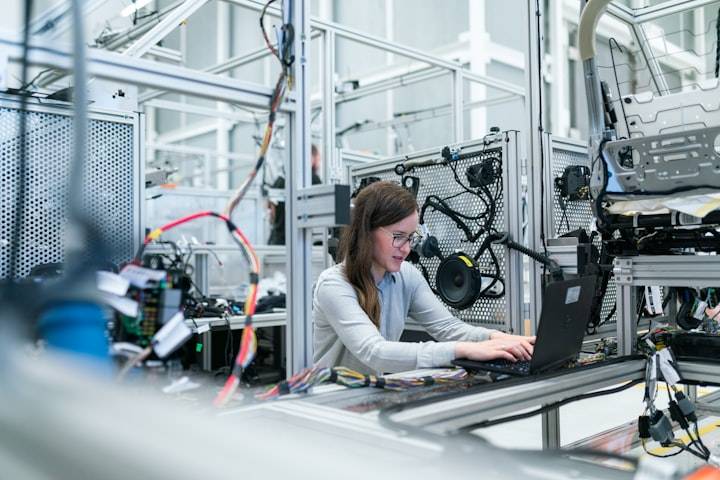From the invention of the telephone to the rise of the internet, technological advancements have shaped and reshaped communication, making it faster, more accessible, and more dynamic. Modern communication is now primarily digital, impacting the way people interact on personal, professional, and global levels. The profound influence of technology on communication is seen in the development of new platforms, the shift to online communication, and the increasing use of artificial intelligence (AI) and automation in messaging.
The Rise of Digital Platforms
In the past few decades, digital platforms such as social media, instant messaging apps, and video conferencing tools have transformed how people communicate. Platforms like Facebook, Twitter, Instagram, and TikTok have become vital means of communication, providing individuals with the ability to share thoughts, opinions, and experiences with a wide audience in real time. These platforms allow people to connect across vast distances, overcoming geographical barriers. Through likes, comments, and direct messages, people engage with each other on an unprecedented scale.
Instant messaging services like WhatsApp, Telegram, and Facebook Messenger allow for immediate, direct communication, further enhancing the speed at which we can communicate. Video conferencing apps such as Zoom and Microsoft Teams have become essential for both personal and professional communication, especially in the wake of the COVID-19 pandemic. These tools enable face-to-face conversations without physical proximity, making work meetings, family gatherings, and educational classes more flexible and accessible.
Global Communication and the Internet
The internet is arguably the most transformative technological development in terms of communication. Before the internet, communication was limited by physical space and the constraints of traditional media like print, radio, and television. Today, the internet has connected billions of people across the world. Social media platforms, blogs, news websites, and forums have become places where people from different cultures and backgrounds can share information and exchange ideas instantly.
The internet has also facilitated the rise of online communication tools such as email, which has become an integral part of professional and personal communication. The ability to send and receive messages almost instantly has made communication more efficient, eliminating the time delays of traditional postal services. Moreover, email has enabled the transfer of large amounts of data, including documents, photos, and videos, facilitating better collaboration and the exchange of information in business and education.
The Shift Toward Online Communication
As technology continues to advance, more and more people are opting for online communication over face-to-face interactions. Online communication allows for greater convenience, speed, and accessibility. People can send messages, make calls, and join virtual meetings from almost anywhere, eliminating the need for physical presence. This shift has also led to the rise of telecommuting, with many people working from home, attending virtual conferences, and collaborating on digital platforms rather than commuting to offices.
This trend is particularly evident in the workplace, where technology has enabled remote work and virtual collaboration. Platforms like Slack, Asana, and Trello help teams coordinate and communicate without the need for in-person meetings. In education, online learning platforms like Google Classroom and Moodle allow students and teachers to engage in remote classes, reducing the dependency on traditional classroom settings.
However, this shift toward online communication has also raised concerns about the loss of personal connection and the impact on mental health. Many individuals report feeling isolated due to a lack of face-to-face interactions, and the rise of online communication has led to new challenges in maintaining meaningful relationships. In addition, the constant connectivity enabled by digital platforms has made it harder for people to disconnect, contributing to burnout and stress in both personal and professional spheres.
The Role of Artificial Intelligence in Communication
One of the more recent technological advancements influencing communication is artificial intelligence. AI-powered chatbots and virtual assistants, such as Apple's Siri, Amazon's Alexa, and Google's Assistant, have become commonplace in daily life. These systems are designed to help with tasks ranging from setting reminders to providing real-time information.
In business communication, AI-driven tools like chatbots are increasingly being used to automate customer service. Chatbots can handle customer queries, resolve issues, and even offer personalized recommendations, significantly improving efficiency. AI is also making waves in social media platforms, where algorithms tailor content and advertisements to individual preferences, enhancing user engagement.
AI’s influence on communication extends beyond automated systems; it also includes the use of natural language processing (NLP) to improve the way we interact with technology. For example, machine learning algorithms can now understand, interpret, and respond to human language more effectively, facilitating better interactions with devices, search engines, and virtual assistants.
Conclusion
The influence of technology on modern communication is undeniable. Digital platforms, the internet, and AI have transformed the way people connect with each other, breaking down geographical barriers and increasing the speed and accessibility of communication. However, this shift also comes with challenges, including the potential for reduced personal connection and increased mental health concerns. As technology continues to evolve, the landscape of communication will likely keep changing, creating new opportunities and challenges for individuals and society as a whole. The key will be to strike a balance between the convenience and efficiency that technology offers and the need for meaningful, personal interactions.


